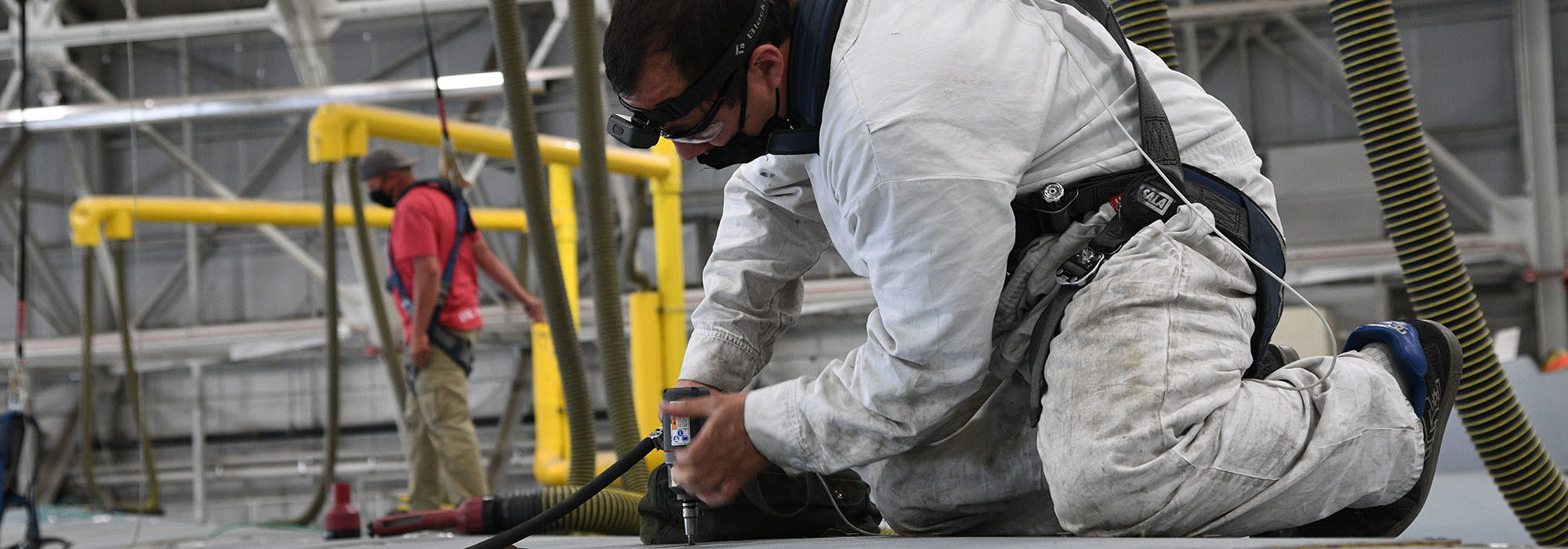Calling the condition of the military’s depots, shipyards, and arsenals a “crisis,” House Armed Services Committee Readiness panel chair John Garamendi (D-Calif.) gave Pentagon acquisition and sustainment officials three months to return a five-year plan for modernizing the military’s organic industrial base, warning that the “request … will be enforced.”
Although Pentagon leaders call the in-house industrial plants “national treasures,” Garamendi said, the “supposed commitment” to their rehabilitation “is not translated into action,” and the facilities are “chronically underfunded, to the point where [they] are relics of the past.” The “crumbling, WWII-era depots are outdated for today’s missions,” Garamendi asserted, adding, “some are on the national historic register.”
Citing a Government Accountability Office report, Garamendi said the depots are struggling with equipment that in many cases is a decade past its life expectancy. The conditions are hazardous, safety is threatened, and the system is inefficient, and not prepared for tomorrow’s weapon systems, he charged.
Garamendi chided the services for supplying 20- to 25-year plans for modernizing the facilities. “I’ve told all the witnesses here today that there is no such thing as a 25-year plan,” he said. “That is a cheap way of saying you don’t have a plan.” He added that he “cannot imagine any private-sector industry accepting a 20-year timeline to catch up to its competitors. But that is what the military is saying.”
Within three months, Garamendi said the committee will expect a “detailed” five-year plan of the highest-priority projects for each service, with “the preliminary engineering and environment” assessment. He also wants detailed budget plans, saying, “Show me the money.”
Committee ranking member Rep. Doug Lamborn (R-Colo.) agreed with Garamendi on most counts and echoed the demand for the five-year plan in three months
Garamendi was particularly incensed that depot projects were on the services’ unfunded priority lists. Calling that a “resource play,” he said such a move “sends the message that the facility and equipment optimization is optional; in other words, not a priority. … It can’t be both ‘absolutely essential’ and then not prioritized.”
He said, “Both sides” of the aisle will “find a way … to know what you’ve proposed” in service budgets for depots in fiscal 2023 and after, “and then we’ll find out what the Secretary approved, and if those don’t match the five-year expectations of the committee, … your replacements will hear from us. This committee is not messing around.”
While he said he understood that each of the witnesses are “acting” as service acquisition executives pending nominations and confirmations of political appointees, he warned them, as senior advisers to the eventual incumbents, to advise a straightforward and urgent plan to deal with the depots. “The heat is going to be upon you,” he said.
Garamendi also said the committee “may do prioritization” of projects among the services, to make sure those most pressing are dealt with first. He also admitted that Congress bears some responsibility for the issue, as continuing resolutions instead of approved budgets have made it easier and sometimes necessary for the services to reprogram funds from the organic industrial infrastructure to pressing weapons programs.
Air Force acting acquisition, technology, and logistics executive Darlene Costello said the Air Force is applying “the same level of urgency” to the organic sustainment enterprise as it is to its combat capabilities.
“Our current aircraft inventory is becoming significantly more expensive to maintain as it ages,” she said, increasing in cost 130 percent over 20 years due to its average age, “even with a 15 percent decrease in total aircraft inventory” over the same period. At an average age of 29 years, “the Air Force fleet is the oldest in the Department of Defense. Air Force depot workers are developing new processes and using new tools to speed things up, she said, and in 2021 delivered “602 aircraft, 316 engines, 141,353 parts, and 611 software bundles to the warfighter.”
“But even with creative problem-solving, our challenge is exacerbated by the aging infrastructure, a dwindling supply and manufacturing base, and challenges recruiting highly skilled technicians and STEM workforce. It’s essential that Air Force depots “stay ahead of future missions” and build infrastructure to deal with fifth-generation systems in volume, she said.
In 2019, the Air Force built a “20-year strategic plan to revitalize the depots” that would improve readiness. “We continue to refine that plan,” she said, noting the Air Force has spent $2 billion over the previous four fiscal years to improve the infrastructure and equipment across the three complexes. The program is called “Keep Up, Catch Up, and Leap Ahead,” and Costello said a congressional mandate of 6 percent of service spending on depots is regarded by the Air Force as “the floor. … We want it to be more.”
Members and witnesses agreed that updated facilities would go a long way in recruiting and retaining essential workers, while antiquated facilities would cause them to leave. A majority of the depot workforce is nearing or at retirement age.
Most of the half-dozen members in the hearing questioned Costello and her peers at the Army, Navy, and DOD about whether they believed vaccination mandates were threatening to force many essential workers out of their jobs, but the witnesses said that vaccination rates are running above 96 percent and they have heard no widespread complaints.

